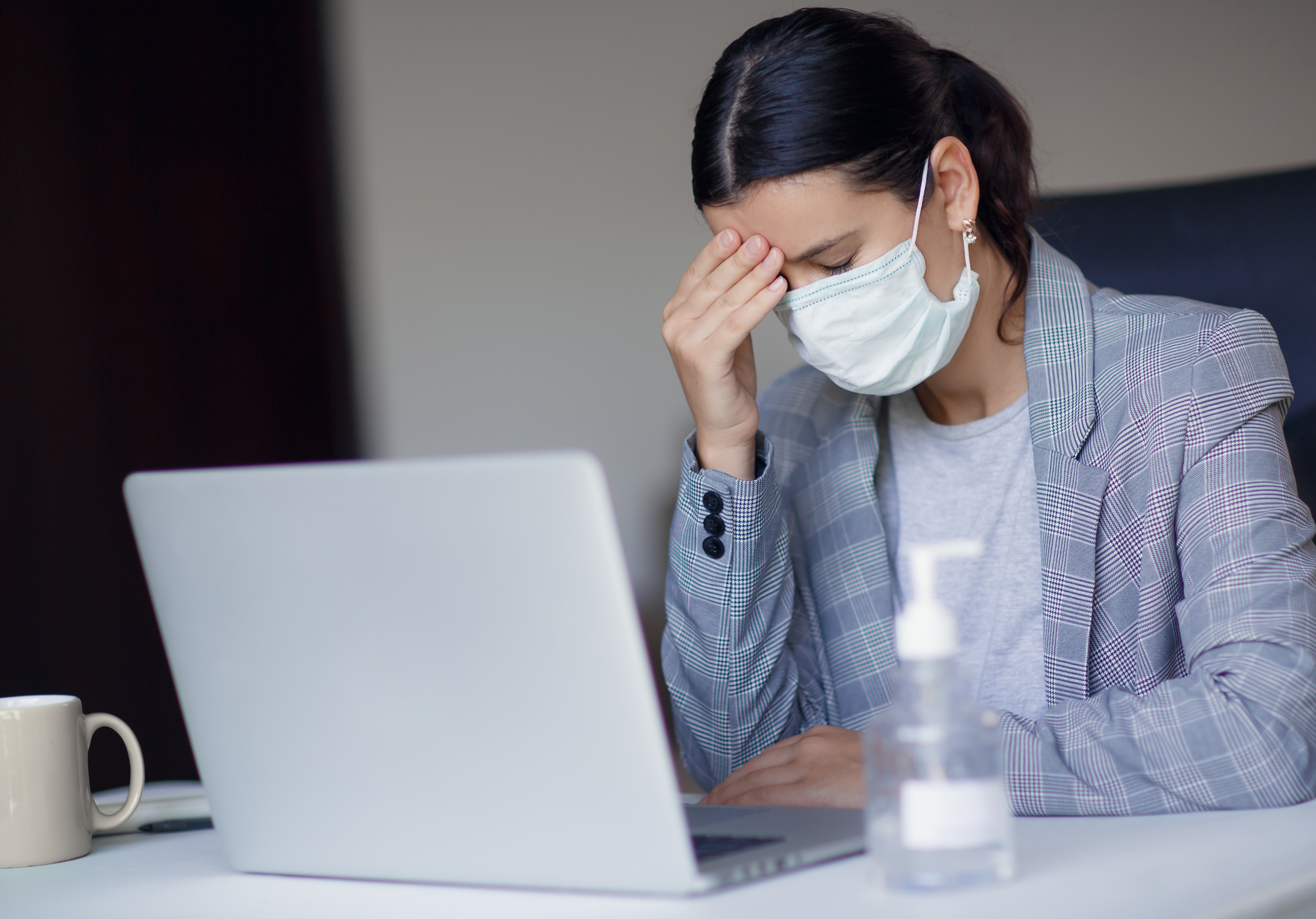Most people spend the greater part of their day indoors in the U.S., even more so when the weather is too hot or too cold to go outdoors. Whether at work or school, at a store, or the gym, Americans spend hours on end breathing indoor air—and it’s oftentimes making them sick. Could your building be making occupants sick as well?
The answer is an unfortunate — but resounding—yes. Major health organizations in the U.S.—including the National Institutes of Health (NIH) and the Environmental Protection Agency (EPA)—have long recognized what’s known as sick building syndrome (or SBS) as an acute health condition.
Keep reading to learn what SBS is, how to identify it, and—most importantly—how to prevent it by creating a cleaner, safer, and healthier environment for your employees, customers, and guests.
What Is Sick Building Syndrome?
Sick building syndrome, or SBS, describes a range of negative health effects and discomforts associated with spending time inside of a building with poor indoor air quality. The symptoms link to a specific indoor space—whether the whole building or only certain areas—and usually improve when a person leaves that space. With SBS, there’s no specific illness or single cause to which the symptoms can be attributed.
How To Identify Sick Building Syndrome?
The symptoms of sick building syndrome can be vague and mimic other ailments like allergies, colds, or even general stress and anxiety. A key indicator of SBS is that these symptoms often go away or improve significantly shortly after leaving the problematic area.
According to the U.S. Environmental Protection Agency (EPA), common symptoms of SBS include:
- Headaches
- Eye, nose, and/or throat irritation
- Dry, itchy skin
- Dry coughs
- Dizziness and nausea
Whether or not building occupants have experienced or complained about any of these symptoms, it’s crucial to pay attention to your building’s indoor air quality. While these symptoms are often acute, poor indoor air quality can have long-term health implications for building occupants.
And it’s a bigger problem than you might think. The EPA has shared that Americans spend upward of 90% of their time indoors, where air pollutants can be 2 to 5 times higher compared to the outside air. In addition to the medical symptoms pointed out above, irritants at these higher concentrations may also impact focus and energy levels, productivity, and overall employee and guest satisfaction.
To protect the health and safety of building occupants, all building managers should evaluate their current air quality and take steps to prevent sick building syndrome.
What Causes Sick Building Syndrome?
According to the EPA, the primary cause of SBS is poor indoor air quality (IAQ). Several factors play a role in IAQ, including:
- Poor ventilation: Suboptimal indoor air ventilation allows pathogens and irritants to concentrate to high levels, causing discomfort and illness. Additionally, mold can more easily breed and accumulate in improperly ventilated areas.
- Indoor contaminants: Indoor contaminants can include cleaning agents, paint, adhesives, and other chemical compounds that emit volatile organic compounds (VOCs). Mold and bacteria growth are also common indoor contaminants that can make building occupants sick.
- Outdoor contaminants: Building occupants bring in contaminants from the outdoors like dirt, dust, debris, and pollen. Vehicle exhaust fumes and tobacco smoke can also seep into the building and negatively affect indoor air quality.
As contaminants accumulate on surfaces (and especially in the carpets), the air quality deteriorates over time, and sick building syndrome symptoms can become more pronounced.
How to Prevent Sick Building Syndrome
There are many ways to prevent sick building syndrome, and they all address the source of the problem: indoor pollution and airborne contagions.
1. Improve Ventilation
Improving ventilation is a critical step to improving air quality in the building. That's because effectively ventilating a space helps disperse droplets that carry the virus, making it less likely for building occupants to breathe in viral particles and get sick.
The same principle applies to other indoor contaminants. Good airflow into and out of the building keeps contaminants from concentrating to levels that can make occupants feel unwell.
2. Use HEPA Filters
It's key to use air purifiers to filter out airborne contaminants and vacuum carpets daily with a commercial carpet cleaner that uses a HEPA filter. Moreover, carpets are the #1 air filter in any building. They accumulate numerous contaminants daily—from dust settling to people tracking in debris from the outdoors. Without a HEPA filter, vacuuming kicks that back into the air—making the air quality worse.
3. Eliminate Harmful Contaminants at the Source
Many contaminants that contribute to indoor air pollution need to be addressed at their source. For example, if mold is identified, merely improving ventilation and air filtration will not fix the problem. The mold should be removed, and effective ventilation and humidification methods should be implemented to prevent future growth.
In addition, consider limiting the use of air fresheners that mask odors and add more irritants into the air. Instead, choose environmentally friendly cleaning methods that safely eliminate the contaminants.
4. Maintain Cleaning Consistency and Thoroughness
Most importantly, reducing the risk of sick building syndrome isn’t a one-and-done solution. It requires consistent and thorough cleaning to maintain good indoor air quality, and daily vacuuming is key. While this might seem like an overwhelming task, especially in the face of ongoing labor challenges, there are automated solutions that can support thorough, high-quality cleaning with minimal additional effort and costs.
For example, Whiz, the commercial robot vacuum from SoftBank Robotics, cleans large carpeted spaces in a fraction of the time compared to manual vacuuming and uses HEPA filters to remove 99.97% of airborne particles. Whiz is powered by teach-and-repeat technology, meaning once it learns its route, it autonomously vacuums your space with little need for human intervention—maintaining pristine carpets day in and day out, and allowing cleaning staff to focus on higher-value, deep cleaning tasks.
Create Healthier, Cleaner Indoor Environments
Preventing sick building syndrome is critical to ensuring a healthier and cleaner environment for your employees, customers, and guests. Contact SoftBank Robotics to learn how autonomous cleaning solutions can bring your building’s health and safety to the next level.








